Cups Runneth Over at Coffeehouses
by Bob Brooke
A crystal chandelier glistens in the afternoon sun streaming through the
lace-curtained windows. A young waitress balances a tray of pastries and
coffees on one hand, while her patrons read the afternoon papers to the
quiet strains of Mozart's Symphony Number 9 in G-major.
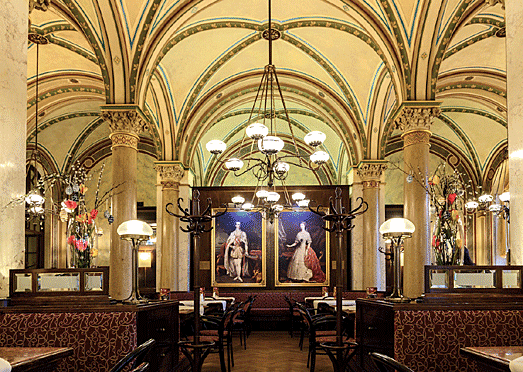
 The
atmosphere is quiet and reserved. The sweet smell of chocolate and
fresh-brewed coffee mix with the heady smoke of European cigarettes. The
waitress delicately sets a large glass filled with dense coffee and a
dollop of ice cream topped with an Everest- like mound of whipped cream
on a customer’s table. Along with all of Vienna’s wonders are its
hundreds of coffeehouses. The
atmosphere is quiet and reserved. The sweet smell of chocolate and
fresh-brewed coffee mix with the heady smoke of European cigarettes. The
waitress delicately sets a large glass filled with dense coffee and a
dollop of ice cream topped with an Everest- like mound of whipped cream
on a customer’s table. Along with all of Vienna’s wonders are its
hundreds of coffeehouses.
When most people hear the word “coffeehouse,” they usually imagine a
cozy Viennese café serving coffees and espresso, with comfy sofas and
chairs for customers to lounge while they sip.
Islamic Beginnings
The first coffeehouses in the Islamic world, qahveh khaneh—Persian
for coffeehouse— appeared in Damascus, Syria. These Ottoman coffeehouses
also appeared in Mecca, in the Arabian Peninsula in the 15th century,
then spread to the Ottoman Empire's capital of Istanbul in the 16th
century. Coffeehouses became popular meeting places where people
gathered to drink coffee, have conversations, play board games such as
chess and backgammon, listen to stories and music, and discuss news and
politics. They became known as "schools of wisdom" for the type of
clientele they attracted.
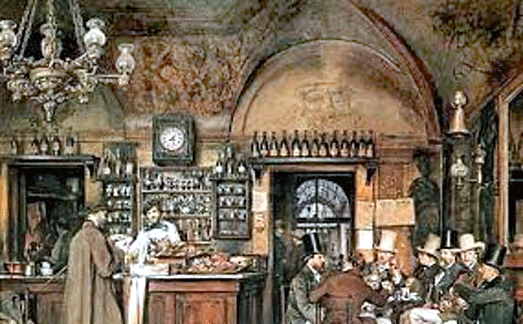
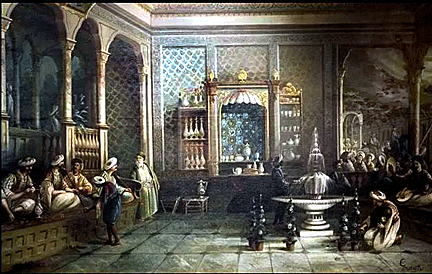 However,
imams in Mecca became concerned about coffeehouses because they believed
they were places for political gatherings and drinking, which led to
them being banned between 1512 and 1524. But coffee had its way,
becoming a part of the daily ritual of most people, which made it hard
to enforce the bans. However,
imams in Mecca became concerned about coffeehouses because they believed
they were places for political gatherings and drinking, which led to
them being banned between 1512 and 1524. But coffee had its way,
becoming a part of the daily ritual of most people, which made it hard
to enforce the bans.
Until 1555, coffeehouses didn’t exist throughout the Ottoman Empire and
especially in Constantinople. Around this time, A man named Hakam from
Aleppo and a wag called Shams from Damascus came to the city. Each
opened a large shop in the district called Tahtakale and began to sell
coffee.
From Arabia to Vienna
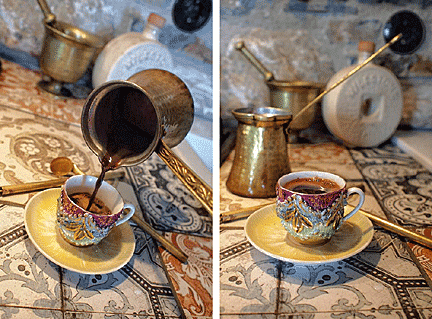 Legend
says that the first coffeehouse in Constantinople was the Kiva Han. The
Turks liked their coffee strong, black, and unfiltered, usually brewed
in an ibrik. They took coffee very seriously. It was so important during
that time that it was legal in Turkey for a woman to divorce her husband
if he couldn’t supply her with enough coffee. Legend
says that the first coffeehouse in Constantinople was the Kiva Han. The
Turks liked their coffee strong, black, and unfiltered, usually brewed
in an ibrik. They took coffee very seriously. It was so important during
that time that it was legal in Turkey for a woman to divorce her husband
if he couldn’t supply her with enough coffee.
But how did coffee make its way from Constantinople all the way to
Vienna? The story goes that when the Polish army defeated the Turks in
the Battle of Vienna in 1683, they left sacks of green coffee beans
behind when they fled the city. The victorious Polish king Jan III
Sobieski claimed the beans as spoils of war and gave them to one of his
officers, Jerzy Franciszek Kulczycki, a Ukrainian cossack and Polish
diplomat of Ruthenian descent who used the beans to open the first
coffeehouse in Vienna. He was also the first to serve coffee with milk.

In reality, Johannes Diodato, an Armenian merchant, opened the first
registered coffeehouse in 1685. By the second half of the 18th century,
coffee drinking had become commonplace in Austria.
Over time, a special coffeehouse culture developed in Habsburg Vienna.
Writers, artists, musicians, intellectuals, bon vivants and their
financiers met in the coffeehouses, and the coffeehouses served new
varieties of coffee. Patrons also played cards or chess, worked, read,
thought, composed, discussed, argued, observed and just chatted. And
people obtained a lot of information because local and foreign
newspapers were freely available to all customers. This form of
coffeehouse culture spread throughout the Habsburg Empire in the 19th
century.
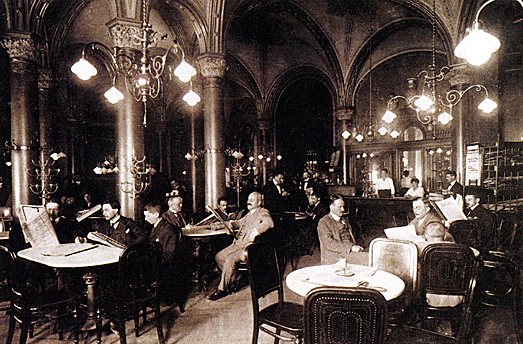
Patrons in coffeehouses throughout Central Europe also discussed
scientific theories, as well as worked on political plans and artistic
projects. James Joyce enjoyed his coffee in a Viennese coffee house on
the Adriatic in Trieste, then and now the main port for coffee and
coffee processing in Italy and Central Europe. From there, the Viennese
Kapuziner coffee developed into today's world-famous cappuccino.
And on to England
The first coffeehouse in England opened in Oxford between 1650 and 1651
by "Jacob the Jew." A second competing coffeehouse opened across the
street in 1654, by "Cirques Jobson, the Jew" (now Queen's Lane Coffee
House).
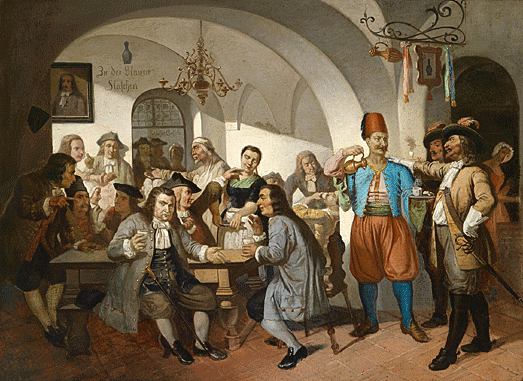
Pasqua Rosée, an Armenian by the name Harutiun Vartian and the servant
of Daniel Edwards, a trader in Turkish goods, opened the first
coffeehouse in England in St. Michael's Alley in Cornhill, London.
Edwards imported the coffee and assisted Rosée in setting up the
establishment which became known as "The Turk's Head."
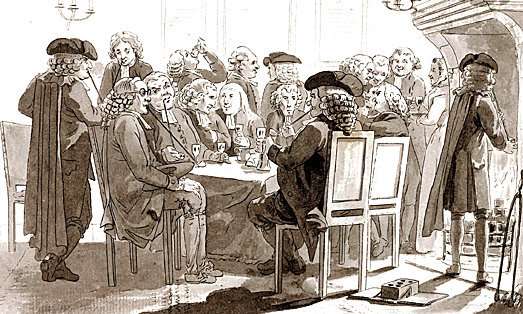
British East India Company and the Dutch East India Company brought
coffee into England in the 17th century. By 1675, there were more than
3,000 coffeehouses throughout England, but there were many disruptions
in the progressive movement of coffeehouses between the 1660s and 1670s.
During the Enlightenment, these early English coffeehouses became
gathering places used for deep religious and political discussions. This
practice became so common, and potentially subversive, that Charles II
made an attempt to crush coffeehouses in 1670s.
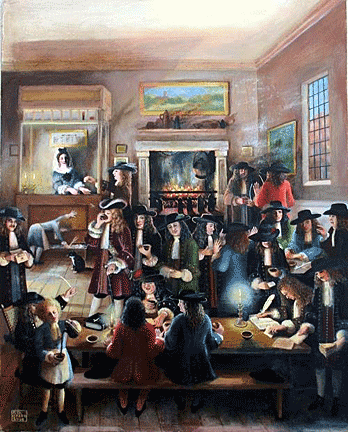 As
government officials believed coffeehouses were places where
anti-government gossip could easily spread, Queen Mary and the London
City magistrates tried to prosecute people who frequented coffeehouses
as they were liable to "spread false and seditious reports." William
III's privy council also suppressed Jacobite sympathizers in the 1680s
and 1690s in coffeehouses as these were the places they believed
harbored plotters against their regimes. As
government officials believed coffeehouses were places where
anti-government gossip could easily spread, Queen Mary and the London
City magistrates tried to prosecute people who frequented coffeehouses
as they were liable to "spread false and seditious reports." William
III's privy council also suppressed Jacobite sympathizers in the 1680s
and 1690s in coffeehouses as these were the places they believed
harbored plotters against their regimes.
English coffeehouses became known as "penny universities" because of the
scholars and students who paid a penny to enter and sit in on a lecture
or have access to books or print news. Coffeehouses boosted the
popularity of print news culture and helped the growth of various
financial markets including insurance, stocks, and auctions.
Coffeehouses also became meeting places where businessmen could exchange
news. Lloyd's of London had its origins in a coffeehouse run by Edward
Lloyd, where underwriters of ship insurance met to do business. By 1739,
there were 551 coffeehouses in London; each attracted a particular
clientele divided by occupation or attitude, such as Tories and Whigs,
wits and stockjobbers, merchants and lawyers, booksellers and authors,
men of fashion or the "cits" of the old city center.
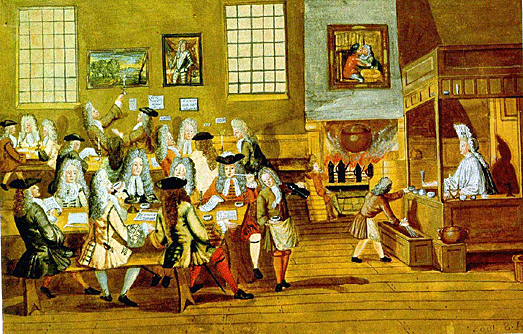
Jonathan's Coffee House in 1698 saw the listing of stock and commodity
prices that evolved into the London Stock Exchange. Auctions in
salesrooms attached to coffeehouses provided the start for the great
auction houses of Sotheby's and Christie's.
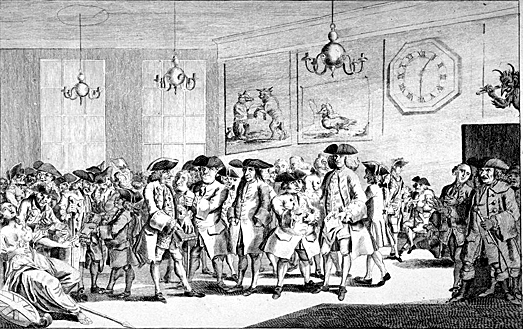
It was in an English coffeehouse that customers used the word "tips" for
gratuities. A jar with a sign reading, "To Insure Prompt Service" sat on
the counter. Customers put a coin in the jar to be served quickly.
European Coffeehouses
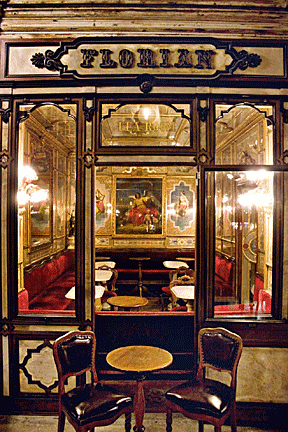 In
Germany, coffeehouses first appeared in North Sea ports, including
Wuppertal-Ronsdorf in 1673 and Hamburg in 1677. Initially, this new
beverage was written in the English form “coffee,” but during the 18th
century, the Germans gradually adopted the French word café, then slowly
changed the spelling to Kaffee, which is the present word. In the 18th
century the popularity of coffee gradually spread and became a favorite
drink of the ruling classes. Though the Great Elector, Frederick William
of Brandenburg, drank coffee at his court as early as 1675, Berlin's
first public coffeehouse didn’t open until 1721. In
Germany, coffeehouses first appeared in North Sea ports, including
Wuppertal-Ronsdorf in 1673 and Hamburg in 1677. Initially, this new
beverage was written in the English form “coffee,” but during the 18th
century, the Germans gradually adopted the French word café, then slowly
changed the spelling to Kaffee, which is the present word. In the 18th
century the popularity of coffee gradually spread and became a favorite
drink of the ruling classes. Though the Great Elector, Frederick William
of Brandenburg, drank coffee at his court as early as 1675, Berlin's
first public coffeehouse didn’t open until 1721.
Italy also had its coffeehouses. Many of the oldest opened in the 18th
century, including Caffè Florian in Venice, Antico Caffè Greco in Rome,
Caffè Pedrocchi in Padua, Caffè dell'Ussero in Pisa, and Caffè Fiorio in
Turin. Another form of café was the coffee bar, a place where patrons
stood at a bar while drinking espresso. These gained popularity in
northern Italy.
Pasqua Rosée, the same person who opened the first coffeehouse in
London, also established the first one in Paris in 1672 and held a
citywide coffee monopoly until Procopio Cutò, his apprentice, opened the
Café Procope in 1686. This coffeehouse still exists today and was a
popular meeting place of the French Enlightenment. Voltaire, Rousseau,
and Denis Diderot frequented it, and it was also the birthplace of the
Encyclopédie, the first modern encyclopedia.
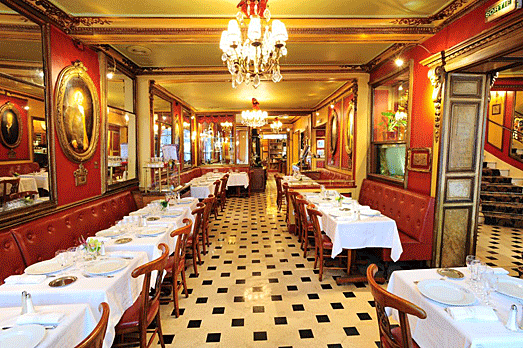
Irish Coffeehouses Encouraged Reading
In the 18th century, Dublin coffeehouses functioned as early reading
centers and the emergence of circulation and subscription libraries that
provided greater access to printed material for the public. The
interconnectivity of the coffeehouses and every facet of the print trade
encouraged the incorporation of printing, publishing, selling, and
viewing of newspapers, pamphlets and books on the premises, most notably
in the case of Dick's Coffee House, owned by Richard Pue; thus
contributing to a culture of reading and increased literacy. These
coffeehouses were a social magnet where different classes of society
came together to discuss topics covered by the newspapers and pamphlets.
Most coffeehouses of the 18th century would eventually be equipped with
their own printing presses or incorporate a book shop.
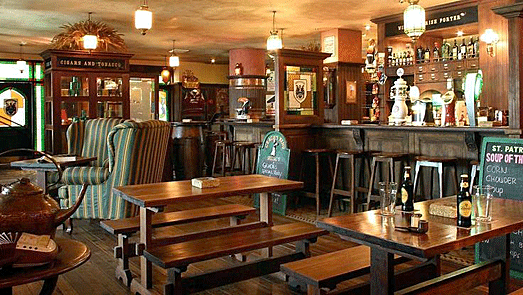
The American Coffeehouse
After the colonization of America, the coffeehouse quickly followed. The
role of the American coffeehouse was the same as those in England. The
first coffeehouse in America opened in Boston in 1676. However,
Americans didn’t begin choosing coffee over tea until the Boston Tea
Party. After the Revolutionary War, Americans went back to drinking tea
until after the War of 1812 when they began importing high-quality
coffee from Latin America and expensive inferior-quality tea from
American shippers instead of Great Britain. Whether serving coffee or
tea, coffeehouses served as places to conduct business. In the 1780s,
Merchant's Coffee House located on Wall Street in New York City was
where the organization of the Bank of New York and the New York Chamber
of Commerce took place. The Tontine Coffee House, opened in 1792 in New
York was the original location for the New York Stock Exchange because
so much business was conducted there.
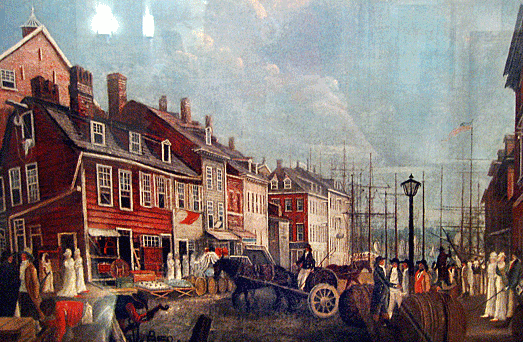
Espresso Arrives
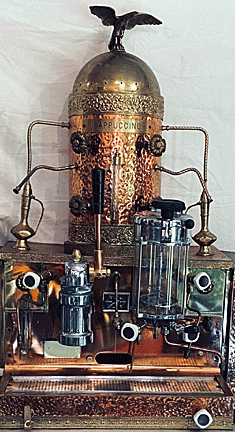 Until
the 1940s, coffeehouses served regular coffee. Then came espresso. In
1946, Gaggia invented the commercial piston espresso machine, which was
far easier to use and safer than earlier models. The Gaggia coffee bar
in Italy was the first location to use these machines and to offer
espresso along with regular coffee. The modern age of coffeehouses was
born. Until
the 1940s, coffeehouses served regular coffee. Then came espresso. In
1946, Gaggia invented the commercial piston espresso machine, which was
far easier to use and safer than earlier models. The Gaggia coffee bar
in Italy was the first location to use these machines and to offer
espresso along with regular coffee. The modern age of coffeehouses was
born.
More than anything, coffeehouses since their first establishment have
always been a place of social interaction—a place where people meet to
talk and exchange the news of their day, but mostly to enjoy a good cup
of coffee.
<
Back to Caring for Your Collections
Archives Next
Article > |
